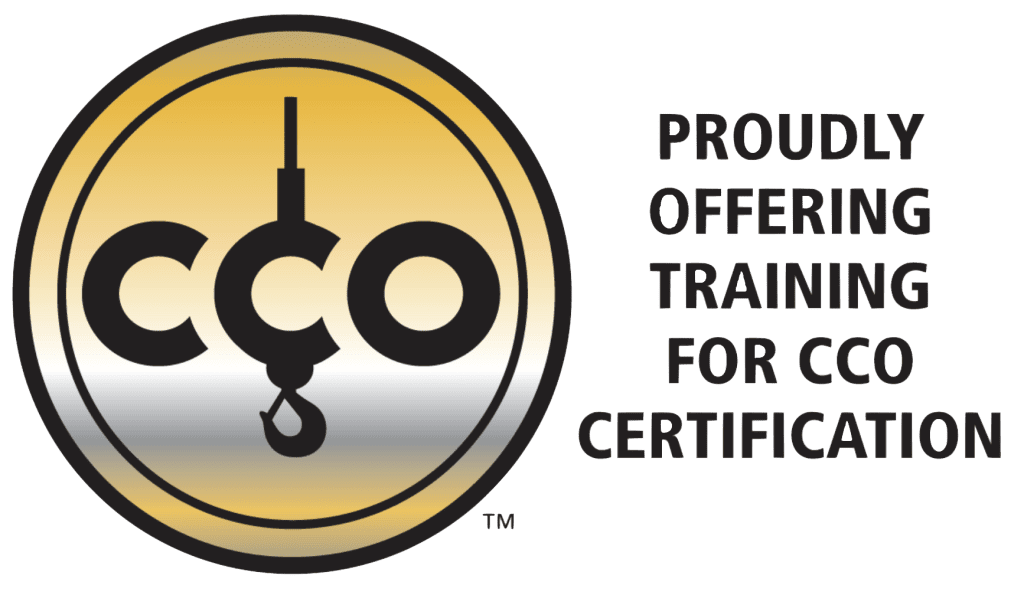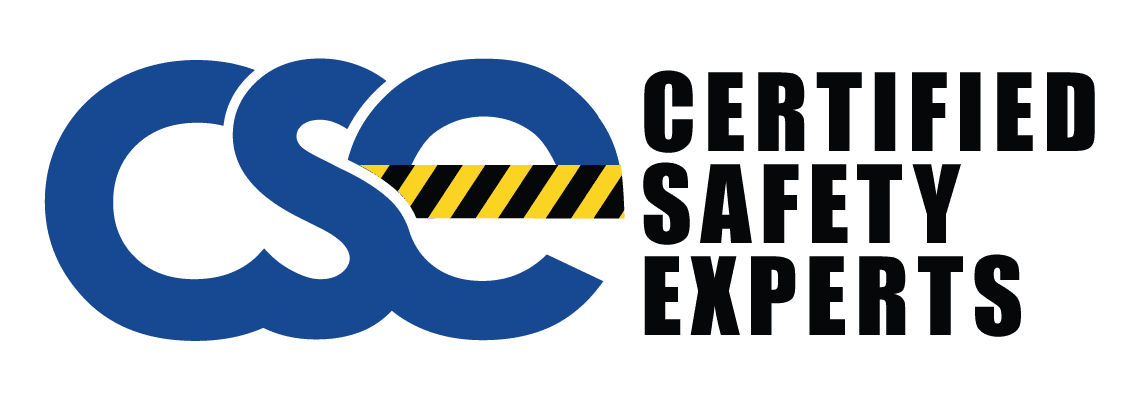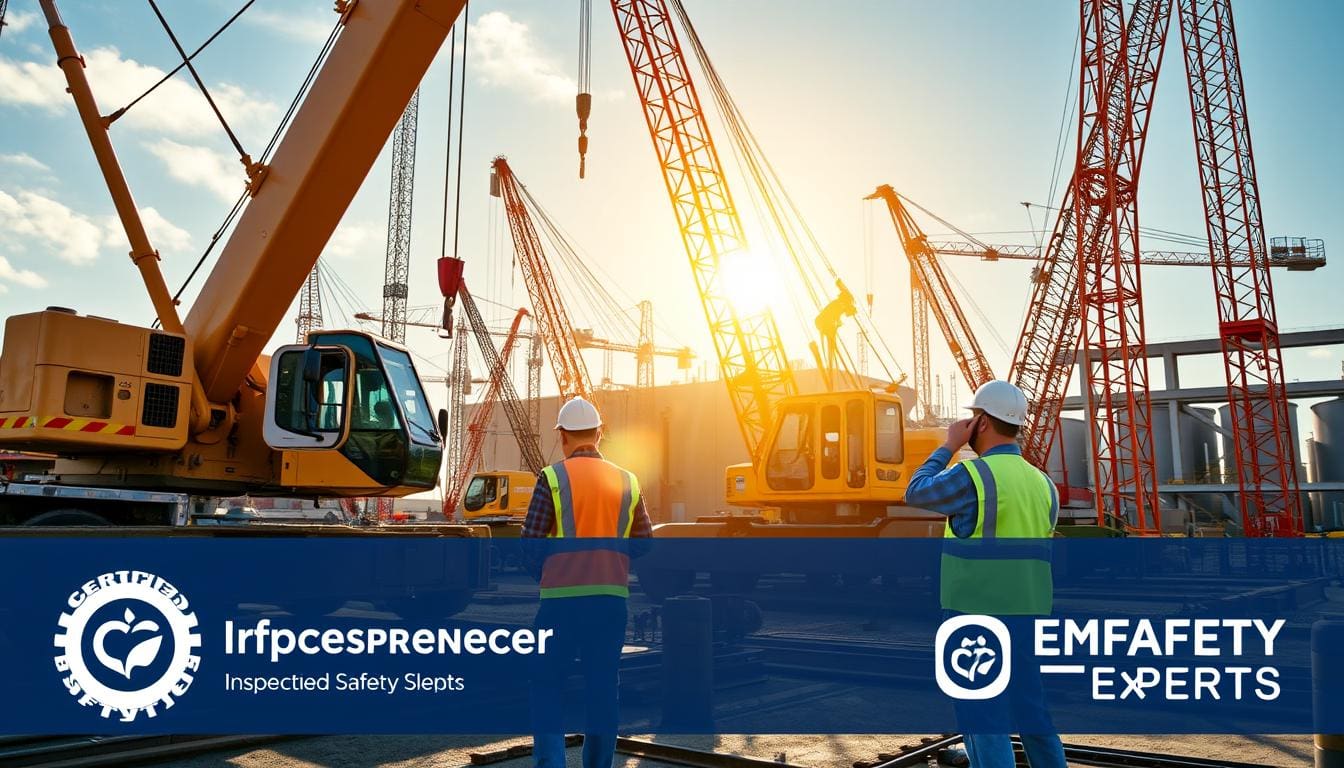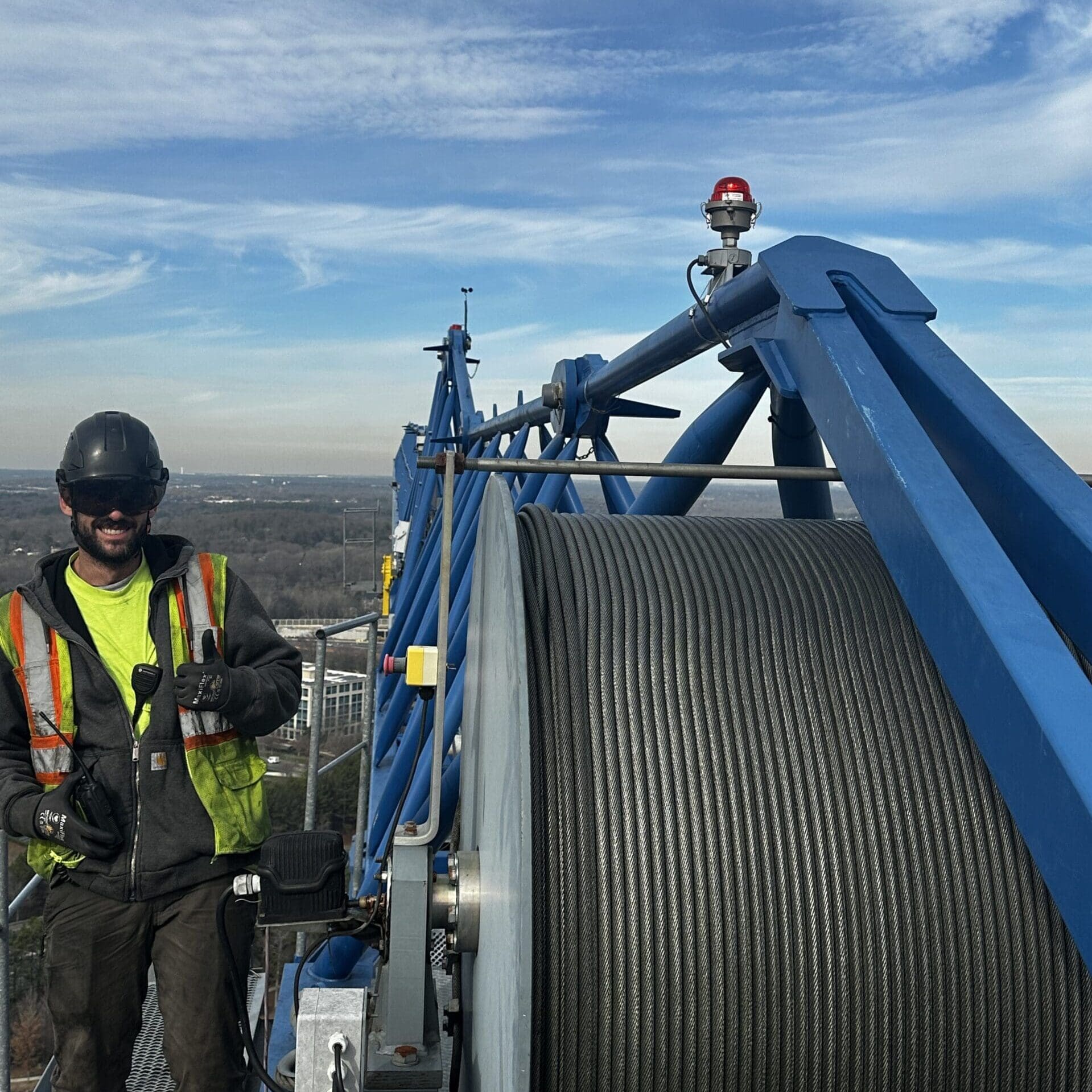Ever thought about how crane inspections boost safety and efficiency? In the world of construction and industry, keeping cranes checked and maintained is key. It’s not just about following rules; it’s about keeping workers safe and machines running long.
Following OSHA standards is a must, or you could face big legal and financial problems. This article covers the key guidelines for staying OSHA-compliant. It shows why regular checks are vital in avoiding accidents and keeping things safe.
Key Takeaways
- Understanding and implementing crane inspection standards is pivotal for safety compliance.
- Regular inspections can significantly enhance operational efficiency by preventing costly downtimes.
- Adhering to OSHA-compliant protocols can mitigate legal and financial risks.
- Proper crane inspection helps in maintaining the safety of personnel and equipment.
- Neglecting inspection guidelines can lead to catastrophic workplace accidents.
Understanding Crane Safety Measures
Keeping crane operations safe is key to protecting workers and avoiding accidents. It’s vital to follow crane safety rules to keep the work area safe and meet industry standards. We’ll look into why crane safety matters, the dangers of crane use, and how to keep cranes safe.
The Importance of Crane Safety
Crane safety is crucial for keeping workers safe, lowering accident risks, and cutting down on lost time. Following safety rules helps avoid injuries and deaths, making the workplace safer. Good crane safety steps also boost productivity and shield against legal issues.
Common Crane Hazards
Crane operations can be risky, threatening the safety of operators and those nearby. Key dangers include:
- Electrical risks, such as touching power lines.
- Mechanical failures, leading to sudden moves or breakdowns.
- Human mistakes, like wrong load handling or poor communication.
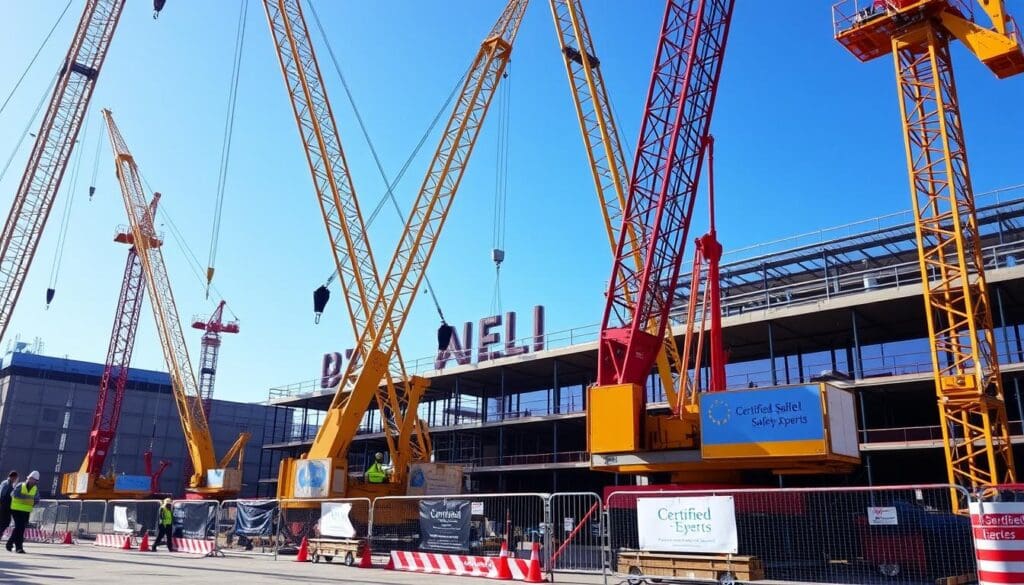
Best Practices for Crane Safety
Using best practices is key to boosting crane safety. Here are some ways to make operations safer:
- Regular maintenance to spot and fix problems early.
- Training operators well, focusing on safety rules and emergency steps.
- Using personal protective equipment (PPE) to protect workers.
By following these best practices and keeping an eye on crane safety, we can lower the risk of accidents. This makes the workplace safer and more efficient.
Crane Inspection Checklist Essentials
Keeping things safe is crucial in any industrial place. A detailed crane inspection checklist is key to this. It helps spot problems early, preventing big risks later.
Here are the main things to check in a crane inspection checklist:
- Structural Integrity: Look for any damage, rust, or wear that could affect how the crane works.
- Inspection of Controls: Make sure all controls like buttons, levers, and remotes work right and respond well.
- Safety Devices: Check that safety gear like limit switches and overload protection work as they should.
- Regular Maintenance: Stick to a maintenance plan to keep the crane running smoothly. This means oiling parts, adjusting things, and replacing worn-out parts.
- Load Testing: Test the crane with a load now and then to make sure it can handle its maximum weight safely.
Doing thorough and regular checks keeps everyone safe and makes the crane last longer. By using a crane inspection checklist and sticking to maintenance, companies can lower risks. This helps keep the workplace safe and productive.
OSHA Crane Inspection Guidelines
Following OSHA crane inspection guidelines is key for keeping work safe and meeting legal standards in construction and manufacturing. This part explains the main points of OSHA rules. It covers what inspections are needed and how to do them right.
OSHA Regulations Overview
The Occupational Safety and Health Administration (OSHA) sets strict rules for crane safety. These rules include many inspections to spot dangers and keep cranes in good shape. Following OSHA rules is vital to keep workers safe and lift loads safely at work.
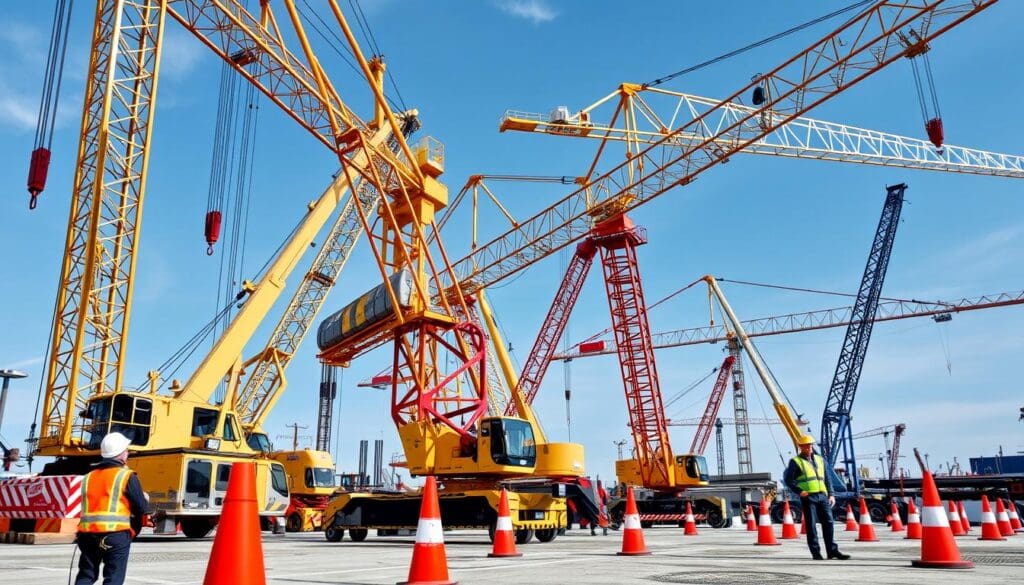
Key OSHA Inspection Requirements
There are key steps to follow for OSHA inspections. One important thing is to check cranes often to keep them safe. Inspectors must be trained to check all parts of the crane carefully. They also need to look at load testing, how strong the crane is, and how it works.
- Initial Inspections: Done right after the crane is set up and before it starts working.
- Frequent Inspections: These happen every month or more often if the crane is used a lot.
- Periodic Inspections: Done once a year by a trained inspector.
Annual OSHA Inspection Protocol
Annual inspections are very important for following OSHA crane rules. These checks make sure everything is up to safety standards and note any issues. Inspectors must write down what they find, list any problems, and what fixes are needed. Keeping good records is key to showing you follow OSHA rules.
- Writing down all inspection results.
- Recording upkeep tasks.
- Making sure all issues are fixed.
By sticking to OSHA’s detailed inspection steps, companies can keep their work safe and legal. This protects workers and keeps equipment in good shape.
Preparing for a Crane Inspection
Getting your crane inspection ready starts with careful planning. You need to follow pre-inspection steps, keep detailed records, and manage them well. This approach cuts down on downtime and makes following rules easier. Here are key steps to prepare for your crane inspection efficiently.
Pre-Inspection Steps
Start by having a detailed meeting with everyone involved in the inspection. Talk about the inspection schedule, what to watch out for, and what to do before the inspector comes.
Make sure to check the crane’s maintenance history recently. Make sure all fixes and regular upkeep are documented. This helps spot any issues that might be missed before the official check.
Documentation and Records
It’s important to have your crane’s inspection documents in order. Keep a record of all maintenance, repairs, and past inspection reports. Make sure these are easy to find and well-organized for the inspector.
Also, collect all operation manuals, safety checklists, and compliance certificates. Good documentation shows you follow safety rules. It also helps during the inspection.
Want to make your crane inspection preparation easier? Call (919) 326-3742 to schedule a crane inspection service. Being well-prepared not only keeps you in compliance but also boosts your crane’s efficiency.
